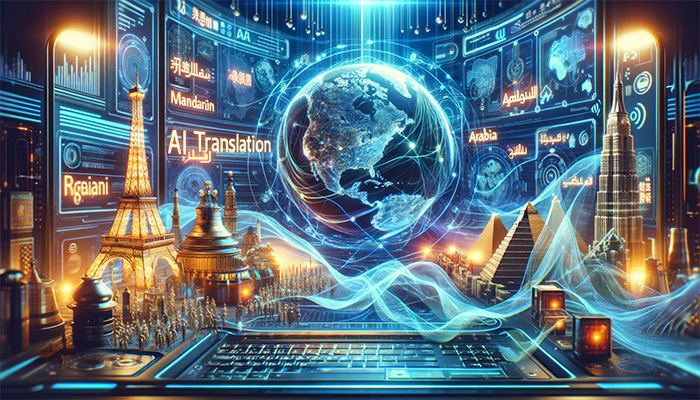Document translation Languages Machine translation Technical Translation Translation Services
What is technical document translation?

Accurate technical document translation is vital in today’s global market.
We’re here to provide an in-depth understanding of what technical translation means, when you’ll need it, and the challenges it brings.
We’ve also made a few useful top tips to help you successfully translate your highly-technical documents in various languages.
What is a technical document translation?
The source technical document could be a user manual, comprehensive guide, website, declaration, patent, data sheet, technical brochure or safety report. The subject of these texts can range from science, software or engineering, right through to detailed medical data sheets and beyond.
Technical translation is more than just translating specialist language and key terminologies accurately. Communicating in a natural way which is right for the culture is an art.
A good technical document translator must:
- Have an in-depth understanding of the intricate subject matter and preferably have worked in the industry
- Understand the preferred terminology and vocabulary of the company
- Be an expert in the culture of the target language
The goal of technical translation from a source text is to make that text culturally-appropriate and understood by the target audience.
When do I need technical document translation?
If your source text contains complex or industry-specific terminology and concepts, you will likely need the help of a specialist language partner who is an expert in technical translation.
These are just two examples of common technical documents:
-
Patent translation
Patents are governed by legal and practical requirements. The translation of patents is highly complex and requires the linguist to have subject matter expertise and be skilled in writing the documents. The subject could be medical, chemical, mechanical or pharmaceutical.
A clear understanding of the context of the document is required – whether it’s a claim, description, or if it’s going to be needed in a legal dispute.
-
User manual translation
User manuals are one of the other most popular types of document to need technical translation.
As with patents, this type of text also needs the linguist to be an expert on the subject matter and preferably to have had industry experience. In addition, the linguist needs to be an expert on the translation of manuals and guides and be able to execute the right style of writing.
According to an article published by the American Translators Association, technical manuals should have a totally objective tone without ‘any sign of the author or trace of subjectivity’. To achieve this in the target language requires specialist skills.
The translator also needs to understand the correct industry terminology to use in the manual, so it fits nicely into the norms of that language.
To help with this, your language partner of choice should be able to start a glossary which is kept up to date with every project.
What is a translation glossary exactly?
Companies which often translate technical documents into a specific language can start to construct a glossary of industry-specific terminology.
This means that whenever they need translation, the words used will stay consistent across different projects. This is an opportunity for your translation partner to gain an in-depth understanding of your brand’s preferred use of terminology.
For example, if you look up words for ‘weld’ in the thesaurus, you will find ‘join’ and ‘fuse’. It would then be best practice to choose one word which remains the same in all translations. There should be no trace of subjectivity and in an objective tone – but terminology should stay consistent.
What is translation memory?
Along with the use of a glossary, leveraging translation memory is also an important part of the process for technical document translation. A translation memory tool is ideal for documents which often repeat the same sentences, such as technical guides. A translation memory tool works by building a database of source and target phrases previously translated by the linguist. These can then be reused where the same phrase reoccurs in the same document or a new document.
However, for original technical documents – which are different to anything your company has produced before – a translation memory tool will not initially produce any time or cost savings. It will, though, increase consistency in this first document by making sure the same phrases are reused.
If it’s your first time working with a language partner, then discussing putting together a glossary of preferred technical terminology would be beneficial for any future document translation project.
Can machine translation be used for technical translations?
Today, machine translation engines have more advanced algorithms and efficient statistical models for the most accurate translation. They are not the right approach for every project, but in some cases are the best route.
There are large bilingual databases packed with industry-specific terminology, glossaries and translation memories. Advanced algorithms even make it possible to translate documents completely, for information purposes, without the need for a human translator.
If a machine is used in the process of technical document translation, an expert specialised technical linguist must always thoroughly review the translation.
The best language companies will help clients identify the right times to use human and machine translation. Some documents are too important to use machine translation, while others are high-volume and low importance, and post-edited machine translation can help reduce costs.
Challenges of technical document translation
When translating documents for global use, the challenges go beyond having knowledge of the intricate subject matter and producing an accurate translation.
-
Preferred terminology
Scientific and technical industries have a rapidly growing list of terminology. The extensive list of vocabulary is made all the more challenging by the concern that it may have a different name in different parts of the world.
The translator must have some knowledge about the subject of the documentation, so they understand the terminology which is normally used.
-
Change the format
Dependant on the target audience, the style and format of the document may have to be reworked. An experienced linguist will understand how the source text will have to be reimagined for global markets.
The format of the document must also be followed exactly to not lose meaning. When translating an instructive and technical manual, the instructions must be accurate and sequential – especially if it’s for assembling a tricky product.
If a manual was translated from English into Italian, it would need to be considered that Italian words would be about 30% longer when translated. This could affect the layout and number of pages.
-
Linguistic form
Looking even deeper into technical translation, the linguistic form of the language needs to be understood; such as tone, syntax, manner of questions posed, and the context of use.
Cultural differences could include different concepts of politeness and stereotypes of foreign people. Such features tend to reflect on the text level, and any literal translation may sound strange for the target culture.
Seek professional help to translate specialist documents and take time to choose the right language partner.
Have peace of mind that your technical documents will be translated accurately by calling a specialist agency such as Brightlines Translation.
Contact us today and we’ll be happy to help.










